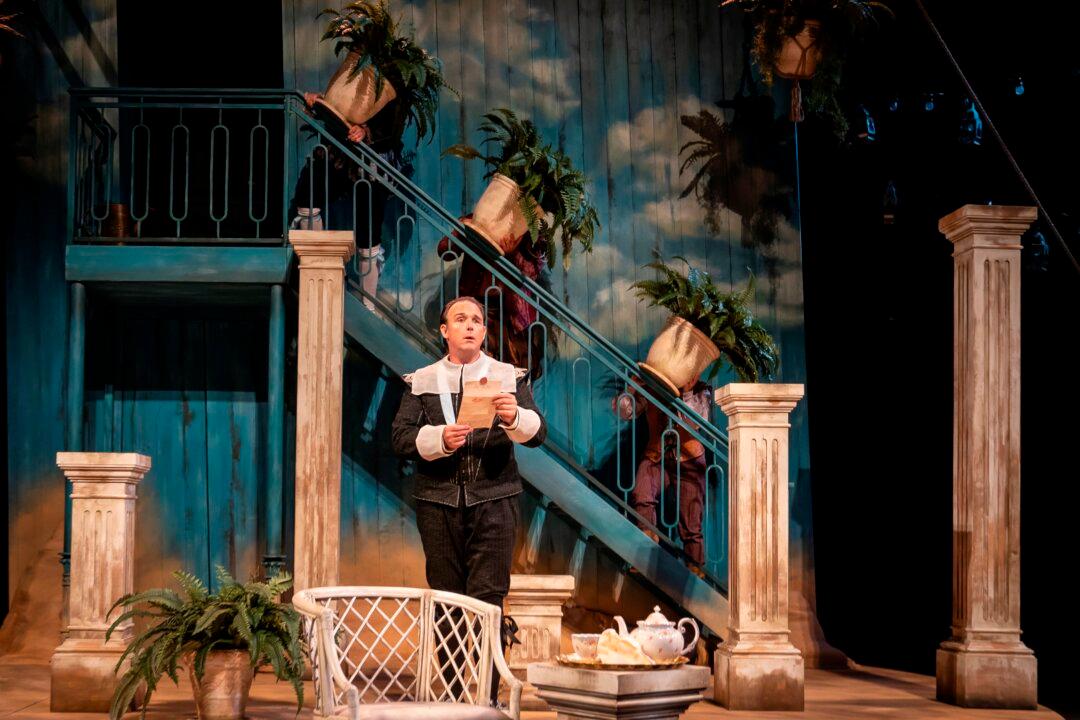My husband grew up with Childcraft, an encyclopedic anthology for young children, and purchased a 1954 set (when Field Enterprises, Inc. was the publisher) online about five years ago. These volumes contain perfectly lovely old-fashioned illustrations, especially the volumes devoted to literature and history (with more American history represented than any other category).
Volume 6, entitled Great Men and Famous Deeds, does not as its title suggests, deal exclusively with well-known deeds, nor exclusively with men. In fact, it comprises an anthology of famous people and events in their lives that are by no means great, but are illuminating. Primarily it gives accounts, from a variety of sources, of these famous folks when they were children.
Clara Barton, the Young Schoolteacher comes from “Clara Barton” by Mildred Pace. It demonstrates how a miserably shy, small girl of 15 was given the responsibility of teaching in a one-room schoolhouse. Dressed up to look older than she was (and certainly felt), Clara found herself facing students ranging in age from 4 to 15 or older. How could she assert herself over them? How would they ever respect her? How this gentle girl won over the big boys and eventually went on to handle schools and children that others could not became crucial to her character, one which led her to overcome bigger challenges later: nursing Civil War soldiers and founding the American Red Cross.
Louisa May Alcott’s Childhood is adapted from Alcott’s “Sketch of Childhood, by Herself,” in her Louisa May Alcott: Her Life, Letters and Journals. It offers an authoritative, if short, peep at an imaginative and active youth: her tomboy days, her days as a dolls dressmaker for the neighborhood, and her time spent running wild through the country through which she gained an artist’s appreciation for nature. Very telling is the incident of her fourth birthday where she passed out cakes to each child attending her party. When the little Louisa realized that if she gave out her last cake, she would be without, her mother instructed her in a lesson in self-denial, a lesson that Marmee so lovingly teaches in the beloved tale “Little Women.”
The Story of Jane Addams adapted from Jean Brown Wagoner’s Jane Addams, Little Lame Girl reveals a moment in Jane’s youth that set the tone for her later achievements. Traveling in her father’s new coach for the first time, Jane saw a poor section of the city she had never seen before, with ugly houses cramped together and without any place for the children to play except the street. She declared to her father that someday she would own a big house right in the middle of the poor area of town so that all the children could play there. Of course, her Hull House was very much built on this idea.
The essence of these stories is that very simple events enacted with love led to lives that touched the world. I cannot think of a better way to inspire a child than to share with them the idea that important people who make lasting contributions started out as children with big hearts and determination.
Volume 6, entitled Great Men and Famous Deeds, does not as its title suggests, deal exclusively with well-known deeds, nor exclusively with men. In fact, it comprises an anthology of famous people and events in their lives that are by no means great, but are illuminating. Primarily it gives accounts, from a variety of sources, of these famous folks when they were children.
Famous 20th Century Women
Clara Barton, the Young Schoolteacher comes from “Clara Barton” by Mildred Pace. It demonstrates how a miserably shy, small girl of 15 was given the responsibility of teaching in a one-room schoolhouse. Dressed up to look older than she was (and certainly felt), Clara found herself facing students ranging in age from 4 to 15 or older. How could she assert herself over them? How would they ever respect her? How this gentle girl won over the big boys and eventually went on to handle schools and children that others could not became crucial to her character, one which led her to overcome bigger challenges later: nursing Civil War soldiers and founding the American Red Cross.
Louisa May Alcott’s Childhood is adapted from Alcott’s “Sketch of Childhood, by Herself,” in her Louisa May Alcott: Her Life, Letters and Journals. It offers an authoritative, if short, peep at an imaginative and active youth: her tomboy days, her days as a dolls dressmaker for the neighborhood, and her time spent running wild through the country through which she gained an artist’s appreciation for nature. Very telling is the incident of her fourth birthday where she passed out cakes to each child attending her party. When the little Louisa realized that if she gave out her last cake, she would be without, her mother instructed her in a lesson in self-denial, a lesson that Marmee so lovingly teaches in the beloved tale “Little Women.”
The Story of Jane Addams adapted from Jean Brown Wagoner’s Jane Addams, Little Lame Girl reveals a moment in Jane’s youth that set the tone for her later achievements. Traveling in her father’s new coach for the first time, Jane saw a poor section of the city she had never seen before, with ugly houses cramped together and without any place for the children to play except the street. She declared to her father that someday she would own a big house right in the middle of the poor area of town so that all the children could play there. Of course, her Hull House was very much built on this idea.
The essence of these stories is that very simple events enacted with love led to lives that touched the world. I cannot think of a better way to inspire a child than to share with them the idea that important people who make lasting contributions started out as children with big hearts and determination.






